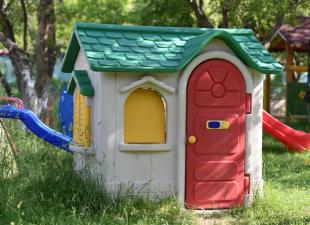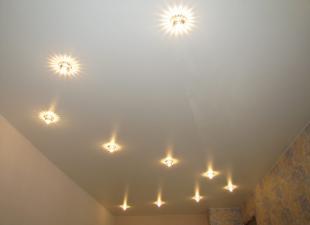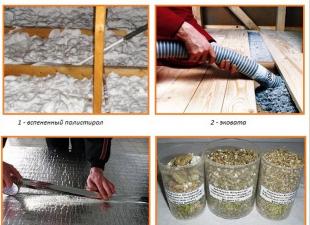The formation of water droplets on pipes in apartments and in private homes is quite common. This process most often occurs in summer and covers the surface of both gravity sewer and "cold" water pipes. The condensation phenomenon itself is not a problem. But its significant accumulation, followed by dripping, leads to the formation of puddles on the floor. The accumulation of condensate on the pipes can significantly shorten the operating period of the water supply system, leading to unplanned repairs. Excessive moisture on pipes causes unpleasant odors and dampness in kitchens, toilets and bathrooms, contributes to the development of mold and mildew.
In this article, we will analyze the main reasons for the appearance of condensation on water pipes and how to deal with it.
The main causes of condensation.
To begin with, let's consider the mechanism of the appearance of water droplets on a pipe from the point of view of physics. Let's remember the very nature of the origin of the condensate. This phenomenon is directly related to the temperature and humidity in the room. We all know that the human body is 80% water and all its vital activity is inextricably linked with the use of water. These are bathing procedures and taking a bath, preparing food and washing clothes. Plants and animals around us, the bathroom rug are also sources of wet steam.
And if such humid air falls on a sufficiently cold surface, then we observe this unfavorable effect - the appearance of condensation.
Back in school, in physics lessons, we studied that all substances can be in three states of aggregation: solid, liquid and gaseous. Ice, water and steam are good examples of this.
As the temperature rises, the water turns into steam. And each room has a specific humidity, i.e. the presence of water in the air in a gaseous state. The transition of water from a gaseous state to a liquid is called condensation... And in order for this transition process to take place, it is necessary to lower the temperature. Since the cold water riser in the bathroom or toilet is the coldest point in the room, condensation falls on the pipe. Everyone probably remembers how drops appear on pipes or a cistern. This is exactly the case.
The temperature at which condensation begins to form is called dew point... The dew point is determined by the relative humidity of the air. The higher the relative humidity, the higher the dew point and closer to the actual air temperature. The lower the relative humidity, the lower the dew point of the actual temperature. If the relative humidity is 100%, then the dew point is the same as the actual temperature. That is, in other words, the humidity in the bathroom can be high, which means the temperature at which the steam turns into water is also higher. Consequently, having met the cold surface of the pipes, the steam will instantly condense, and then will flow down them to the floor.
1. The first reason is faulty plumbing. Leaking faucet, faulty toilet barrels lead to the fact that as a result of constant and uninterrupted water exchange, the surface temperature of the pipe, mixer or cistern gradually decreases. The water simply does not have time to heat up in the pipe, being constantly replaced by cold water, which cools the pipe even more, as a result of which condensation appears on the pipes in the toilet. In this case, the taps and the inlet valve of the drain tank must be checked and repaired.
2. If the plumbing is working properly, but the riser still gets wet, your neighbors in the riser on the floor above may be indirect culprits for the formation of condensation on your pipes. It is because of their faulty plumbing that your pipes sweat.
3. Another reason for the formation of condensation can be the absence or poor operation of exhaust ventilation, which is often found in new buildings and apartments with plastic windows installed, where there is no exhaust hood in the case of closed windows. Water vapor, accumulating in the room, cannot escape outside. In this case, the quality of ventilation can be checked by attaching a newspaper to the hood with open and closed windows. If there is not much difference, then the ventilation is not working well. In the absence of exhaust ventilation in the bathroom, in which the risers are located, sometimes even installing a fan does not help.
Condensate elimination methods.
So, we have found out the main causes of condensation. Based on the reasons, respectively, you can select methods of elimination.
- If the pipe leading to the plumbing fixture gets wet, it indicates a malfunction of the faucet;
- If the plumbing is working properly, but the riser pipe gets wet, it is possible that the neighbors above have a problem;
- If the check showed insufficient ventilation, remove the blockages formed in the exhaust hole, etc.
However, what if all the above methods of dealing with condensation do not give the desired effect? Remains the last, the most simple and effective way.
The use of thermal insulation.
 The use of a thermal insulating layer gives the effect of a thermos, preventing direct contact of the cold pipe surface with warm humidified air. As thermal (or heat) insulation, we recommend the use of heat-insulating pipes made of foamed polyethylene. The KPR-DV company sells them under the Jermoflex brand. To insulate the pipe, it is necessary to wrap the selected heat-insulating material hermetically or put it on the pipe and fix it. Cut the full length of the heat-insulating tubes. To facilitate the work on the Jermoflex pipe insulation, there is already a longitudinal cut. Then the water pipe is wiped dry and heat-insulating material is put on it, achieving complete tightness in such a way as to prevent contact with the air in the room. If this is not done, condensation will accumulate under the heat-insulating material on the pipe and serve as a source of its destruction. Then the put on heat-insulating material is glued along the entire length of the cut (edge) with special tape or glue. These materials can also be purchased from our company and carry out all the work yourself. It is advisable during the smallest drawdown, so that the water in the pipe is heated.
The use of a thermal insulating layer gives the effect of a thermos, preventing direct contact of the cold pipe surface with warm humidified air. As thermal (or heat) insulation, we recommend the use of heat-insulating pipes made of foamed polyethylene. The KPR-DV company sells them under the Jermoflex brand. To insulate the pipe, it is necessary to wrap the selected heat-insulating material hermetically or put it on the pipe and fix it. Cut the full length of the heat-insulating tubes. To facilitate the work on the Jermoflex pipe insulation, there is already a longitudinal cut. Then the water pipe is wiped dry and heat-insulating material is put on it, achieving complete tightness in such a way as to prevent contact with the air in the room. If this is not done, condensation will accumulate under the heat-insulating material on the pipe and serve as a source of its destruction. Then the put on heat-insulating material is glued along the entire length of the cut (edge) with special tape or glue. These materials can also be purchased from our company and carry out all the work yourself. It is advisable during the smallest drawdown, so that the water in the pipe is heated.
We hope this article was helpful. For all questions arising during the installation of thermal insulation, you can contact our managers for advice on a single free number 8 800-250-26-65 ... We will be happy to help you.
 parlini.ru Repair of an apartment, a summer residence and a house.
parlini.ru Repair of an apartment, a summer residence and a house.


